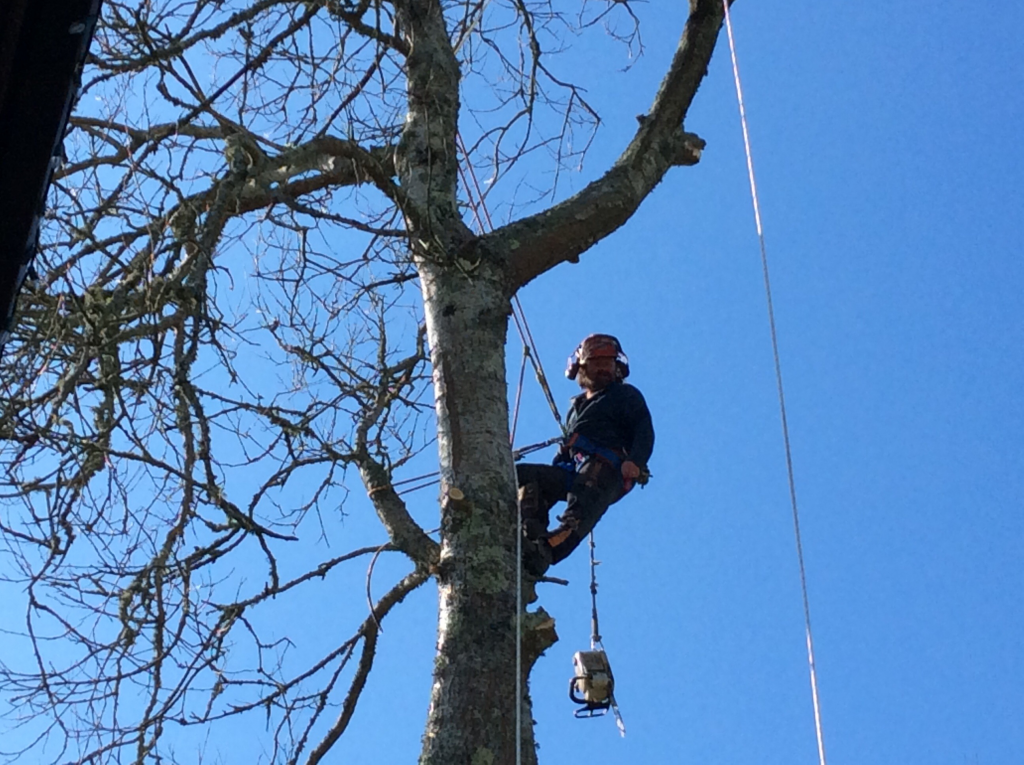
We are academically qualified and professionally trained by the National Proficiency Tests Council (NPTC), the Arboriculture Association, the Institute of Chartered Foresters and the Royal Forestry Society (RFS). Therefore you can be positive that all of our works will be carried out to the highest professional standard and comply to BS3998.
Our tree surgery works have full public liability cover to £10 million and are carried out with full health and safety considerations.
We have a strong health and safety awareness and carry out a comprehensive risk assessment for each job and regular equipment safety checks.
When looking at tree care we consider the whole scenario, taking the health of the tree into consideration and try to balance this with the needs of its position.
We give advice which takes into account the tree as a living organism and NOT in the terms of what work can be done to generate the highest income.
Generally, trees develop in balance with their environment both above and below ground but our need to manage them can result from the natural processes of growth and dieback or from damage caused by severe weather, pests or diseases.
Resolution pruning can be achieved by tree works such as:
Crown Lifting
Removal of lower branches to clear buildings or increase space underneath the tree.
Crown Reduction
Downsizing the whole canopy proportionally to its original shape.
Removing or pruning back individual branches.
Crown Thinning
Selective removal of branches to decrease shading and weight.
Crown Cleaning
Removal of deadwood, broken or rubbing branches.
Pollarding
A method of pruning usually started on young trees, that keeps trees smaller than they would naturally grow. Seen on many street trees throughout Cornwall, useful to retain trees in a confined space or with major defects.
Formative Pruning
Young trees need to be pruned to produce a mature specimen free from any significant physical weakness.
Management of Weak Structures
Use of braces and supports often in conjunction with pruning to retain trees unsuitable for major surgery.
Felling and Dismantling in Sections
Removal of entire trees of any size and in any location safely, carefully and without damage.
Stump Management
Retained for habitat or as a feature, coppiced for regrowth, a traditional method to produce multiple small stems, mainly Sweet Chestnut or Hazel for woodland products. Use of herbicide to prevent regrowth.
Stump grinding for removal.
Hedges
Hedge trimming, topping and maintenance in line with species requirements, wildlife and shading problems (High Hedges Law 2003)
Hedge laying as a traditional management technique and for nature conservation.
Fruit Tree Pruning
Orchard maintenance and regeneration, pruning for fruit production and the prevention of pests and disease.
BS 3998:2010 Tree work – Recommendations
This is a document, revised in 2010, which lays out the way in which all tree work should be carried out. It covers subject such as:
~What should and should not be specified. i.e. avoid removing limb(s) to create an unbalanced tree likely to collapse
~How to specify the work – terms to be used and how to specify measurements
~How the site should be managed, storage of tools and equipment
~Timings of works after prior pruning, root damage, water stress or defoliation
~How to de-compact, remove and replace soil around trees
~Pruning
~How and when to prune trees
~Where to cut and how much to remove and more importantly how much to leave.
~How to make the final cut (target pruning)
~How to crown thin and crown lift
~Installation and management of cable bracing and propping (to support weak limbs)
~Management and removal of tree stumps
